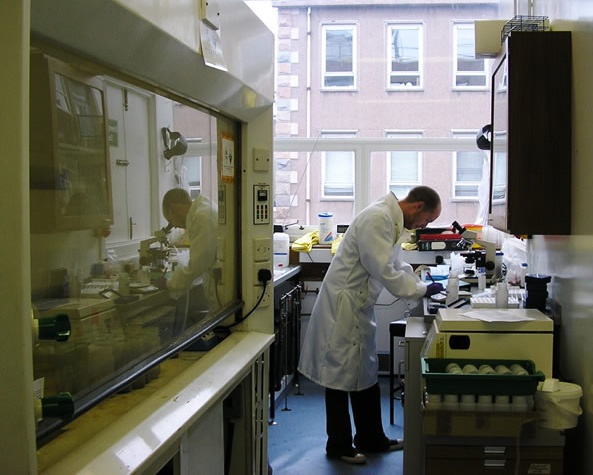
Facilities
The laboratory is equipped for the preparation of palynology mounts for analysis in the departmental microscopy laboratory.
Research

As such, palynology underpins much of our existing research on petroleum reservoir geometries, environmental systems in Large Igneous Provinces (StratLIP) and rapid climate change including that of the palaeoarctic and the Boltysh Meteorite Impact Crater located in the Ukraine. Several PhD students and PDRAs use the palynology laboratory facilities for their research.
Research highlights include:
- Gilmour, I, Gilmour, M., Jolley D.W., Kelley, Kemp, D.P. & Watson, J. (2013). A high resolution nonmarine record of an early Danian hypetrtheral event, Boltysh, Ukraine. Geology.DOI 10.1130/G5342929
- Jolley, DW., Daly, R., Gilmour, I. & Kelley, SP. (2013). 'Climatic oscillations stall vegetation recovery from K/Pg event devastation'. Journal of the Geological Society, vol 170, no. 3, pp. 477-482.
[Online] DOI: 10.1144/jgs2012-088 - Jolley, DW., Gilmour, I., Gurov, E., Kelley, SP. & Watson, J. (2010). 'Two large meteorite impacts at the Cretaceous-Paleogene boundary'. Geology, vol 38, no. 9, pp. 835-838.
[Online] DOI: 10.1130/G31034.1 - Jolley, D.W., Passey, S. Hole, M. & Millet, J. (2012). Large Scale magmatic pulses drive plant ecosystem change. Journal of the Geological Society, Londonvol. 169, 703-711.
- Daly, R., Jolley, D.W. & Spicer R.A. (2011). The role of angiosperms in Palaeocene arctic ecosystems: a palynological study from the Alaskan North Slope. Palaeogeography, Palaeoclimatology, Palaeoecology vol 309, 374-382.
- Lab Manager: David Jolley
- Technical Support: vacant
